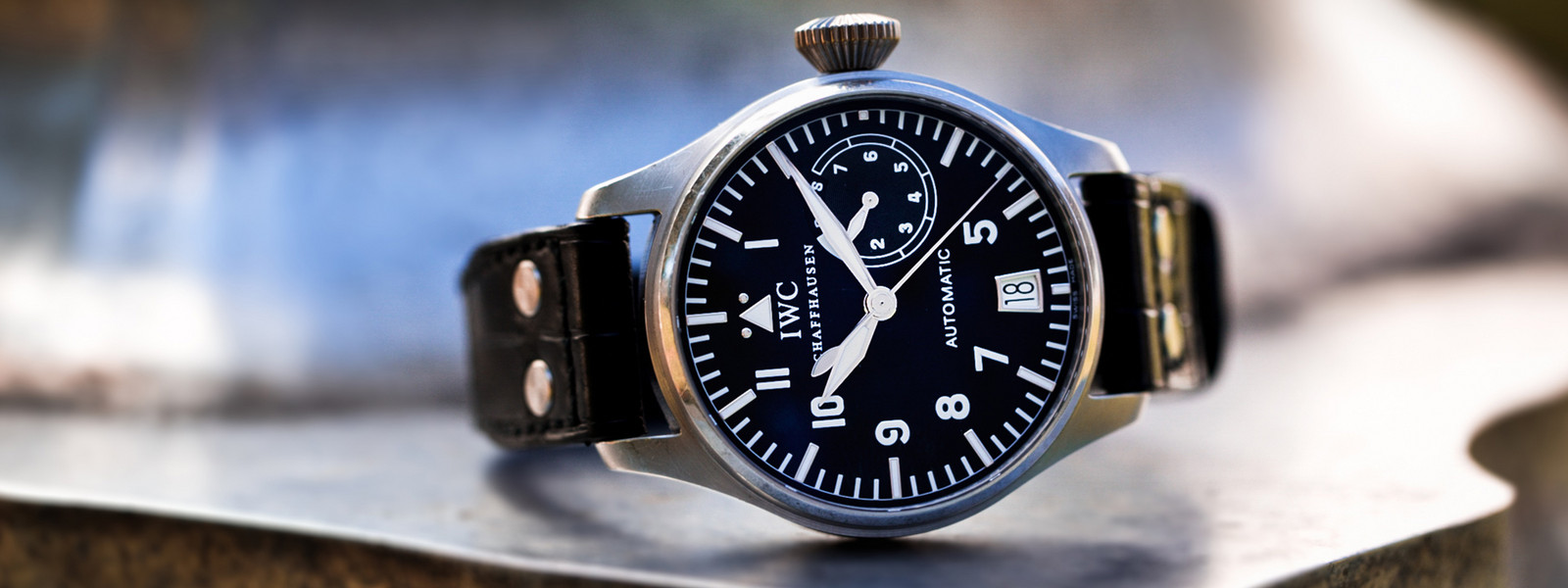IWC's core products were wristwatches but also more and more precise pilot watches, which could be worn over the flyer jackets.
At the beginning of the 20th century flying was an exciting adventure. Charles Lindbergh's flight with his "Spirit of St. Louis" across the Atlantic in 1927 was one of the major media events and attracted worldwide attention. Problematic for the pilots of this time was the fact that the electronic instruments did not provide reliable calculations. At first pocket watches were used as a navigational aid, but they did not stand up to the extreme operations in the airplanes, the reading during the flight was almost impossible. In order to facilitate time measurement in the cockpit, IWC developed the "special watch for airmen".
The "special watch for aviators" was equipped with a black dial, well-readable Arabic numerals, magnetic field protection, luminous hands and robust rotating bezel. This timepiece established a watch dynasty in 1936, which was continued by the Grand Aviator and the Mark X and the Mark XI. The Mark X equipped with the calibre 83, was a wristwatch for the military service use. In the period 1939-1947 about 6000 of these special watches, which carried the letter M = military, on the case bottom, were manufactured. The models made for the British army had the so-called "King's arrow" and the three letters W.W.W (= Watch.Wrist.Waterproof) under the company logo on the dial.
The legendary Mark XI became the official timepiece of all British Royal Air Force pilots in the years after the Second World War and remained in use for more than 30 years. In addition to RAF pilots, the captains of renowned civilian airlines and the officers of most of the Air Force in the Commonwealth, including the Australian, New Zealand and South African Air Force, trusted the military IWC watch with radium dial.
To date, these vintage pilot watches are very popular with collectors. In 2002 the Big Pilot was launched. With a diameter of 46 millimeters, it is much smaller than the original pilot watch from the 30s, but it is still popular among the lovers of large watches. The flagship of IWC is equipped with the largest automatic movement of the Schaffhauser manufactory, the calibre 51111. It is considered a homage to the navigation clock for the German Luftwaffe from the year 1940. 10 years later IWC dedicated a limited edition of the pilot watch to the writer and pilot Antoine de Saint Exupéry.
In 2007, the TOP GUN became part of the IWC family. The name "Top Gun" was inspired by the United States Navy Fighter Weapons School, from Fallon / Nevada.



















